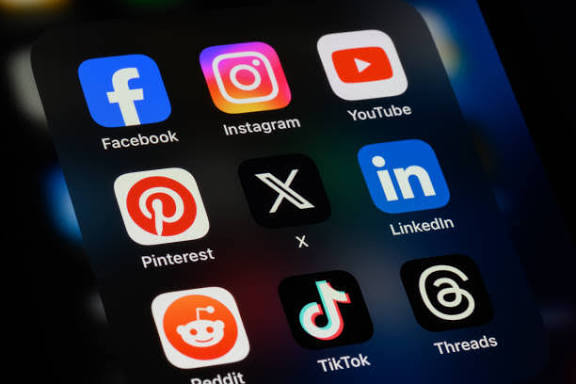Social Media Is the New CV: Redefining How We Present Ourselves to Employers

Social media is fast becoming more than just a space for sharing life updates, memes, or photos. It is now a central feature of many people’s professional identity. Profiles, posts, and networks increasingly serve as living, evolving credentials, forming what many are calling a “social CV.”
Employers are using social media to find talent, screen candidates, and understand who people are beyond what their paper CVs say. They want to see personality, values, interests, and soft skills. They want to know how people communicate, how they engage, and whether they will fit a company’s culture.
Statistics show that globally, about 94 percent of recruiters now use social media in some part of their hiring process. LinkedIn remains the dominant platform for this purpose, with around 90 percent of recruiters using it to source or vet candidates.
Many employers also check Facebook, Twitter, and other platforms. For example, over half of recruiters use Facebook, and nearly half use Twitter when researching applicants. In one study, 92 percent of employers admitted to using or planning to use social media in recruitment.
From the job seeker’s side, many people now use social media as part of their job search. About 84 percent of job seekers say they have used social media to find opportunities or research employers. More than 70 percent say that they have been contacted via social media by recruiters.
Social media also plays a role in screening. Roughly 71 percent of hiring managers agree that social profiles are an effective way to screen candidates. In many cases candidates have been rejected because of something found on their social media profiles—posts, comments, photos, or behavior that raised red flags for employers.
One implication is that traditional CVs—with education, work history, and skills—no longer tell the whole story. A well-maintained social media presence can complement or even outweigh certain traditional credentials, especially in roles where communication, public image, social skills, and digital literacy are important.
But the shift raises risks. What people post, share, or leave exposed can hurt them. Misleading portrayals, unprofessional content, or even the absence of an online presence can disadvantage someone. Because many hiring personnel now check public social media, a candidate’s digital reputation can become a form of credential—positive or negative.
There is also a concern about privacy. Many do not realize how visible their personal lives are online or how much of their data is accessible. Once something is posted, even if later deleted, it may be archived, shared, or captured in screenshots. Employers may see content that applicants did not intend for professional eyes.
The trend is already visible in Nigeria and many African countries though detailed local data is still emerging. Nigerian job seekers increasingly use social media to follow companies, engage with industry conversations, build portfolios or projects online, and share work samples through LinkedIn, Instagram, or Facebook. The presence of “work-related content” on social media profiles is now often considered part of a candidate’s portfolio.
To adapt, job seekers must think of their social media like part of their CV. This means curating content, ensuring professionalism, and aligning what is shared with what potential employers might find desirable. Clean profile photos, well-written posts, relevant engagements, and evidence of skills or projects help create a positive impression.
Educational institutions, career services, and training programs should teach digital professionalism. Young graduates may know how to use social media for fun or socializing but might lack awareness of how it is seen professionally. Guidance on what to share, what to avoid, and how to manage privacy settings is essential.
Employers and recruiters should also develop fair policies about use of social media in recruitment. They need clear standards about what kinds of content are relevant to job suitability, what boundaries exist to avoid bias, and how to fairly evaluate people whose social media content differs by culture, background, or access to technology.
Regulation or codes of practice may help ensure that social media screening is done ethically. Laws or guidelines could protect individuals from unfair rejection just because of personal beliefs, photos, or associations that are irrelevant to job performance.
Technology tools can assist. Services or platforms that help aggregate professional content, build online portfolios, or clean up one’s digital footprint are becoming more useful. Some apps help “audit” one’s social media and highlight problematic content or privacy lapses.
Employers should look beyond “perfect” social profiles and consider potential. They should recognize that someone whose social media is less polished may still have strong skills and capacity. Interviews, references, and practical assessments remain important to validate what is seen online.
Social media can be a powerful tool for good if used wisely. Instead of posting content that may damage reputations or close opportunities, individuals should leverage these platforms to showcase skills, share knowledge, and highlight achievements. Posting creative projects, engaging in professional discussions, following industry leaders, and joining career-related groups can help build credibility and attract opportunities that may never come through a traditional CV.
Everyone has the power to shape their digital footprint. Using social media responsibly not only opens doors to jobs but also helps build networks that can inspire, educate, and support others. By being intentional, professional, and positive online, young people especially can transform their social platforms into springboards for growth, leadership, and lasting impact.
In conclusion, social media is fast becoming the new CV. It is increasingly used by both job seekers and recruiters to represent, evaluate, and select talent. The change has great potential but also serious pitfalls. With good awareness, responsible behavior, and fair practices, it is possible to harness this shift in a way that empowers candidates rather than discriminates.
Joy Adamu Arku, Department of Mass Communication, University of Maiduguri.

